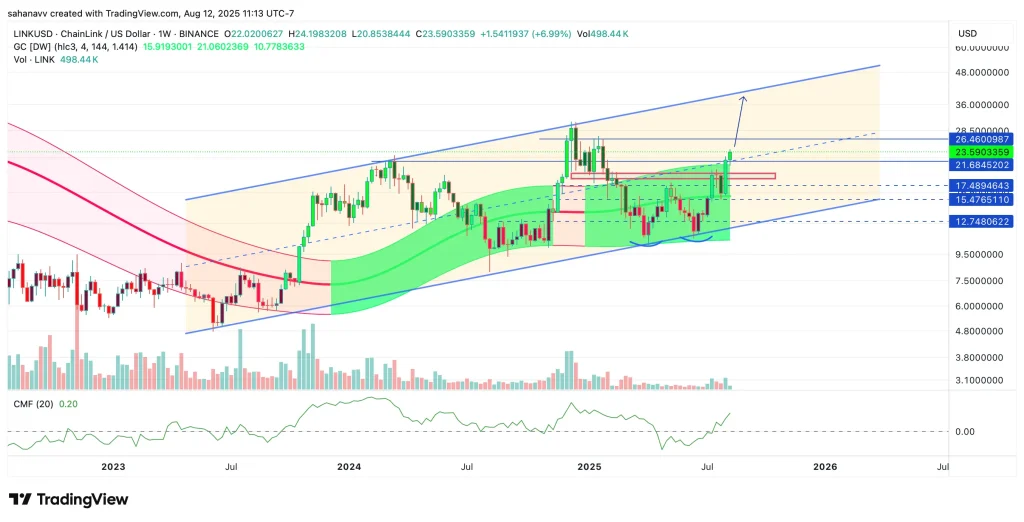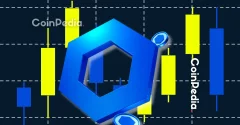Chainlink (LINK) is gaining strong momentum today, fueled by a breakout above key resistance levels and a broader crypto market rally. The price has cleared a long-term descending trendline, opening the path toward higher targets. On-chain reserve accumulation is reducing circulating supply, strengthening the bullish outlook. Institutional developments, such as Chainlink’s partnership with Intercontinental Exchange (ICE), are boosting long-term utility. With $22.5 now in focus, the big question is, can the LINK price reach its next major target at $50, and if so, when will it happen?
Why is Chainlink Price Rising Today?
Chainlink (LINK) price is moving higher today, supported by a blend of technical breakouts, supply dynamics, and positive market sentiment. The broader cryptocurrency rally is providing a favourable backdrop, with Bitcoin and Ethereum’s strength lifting major altcoins. LINK has recently broken above important resistance levels, signaling renewed bullish momentum. On-chain developments, including strategic reserve accumulation, are tightening the circulating supply, which can create upward price pressure.
Institutional adoption is also playing a major role, with Chainlink’s recent partnership with Intercontinental Exchange (ICE) bringing high-quality financial data on-chain—a move that enhances its real-world utility and positions it as a critical player in blockchain infrastructure. Growing integration across DeFi platforms continues to expand LINK’s demand base. Together, these factors—strong market sentiment, reduced supply, institutional-grade partnerships, and expanding ecosystem adoption—are driving today’s positive price action and could pave the way for further gains if momentum continues to build.
LINK Price Analysis: Will it Reach $50?

- LINK price is trading within a long-term upward channel, currently approaching the upper midline, suggesting strong bullish momentum with room toward $26.46 and potentially higher.
- The recent weekly close above $21.68 has confirmed a breakout from the consolidation zone, turning previous resistance into support.
- The breakout from the double-bottom or th




